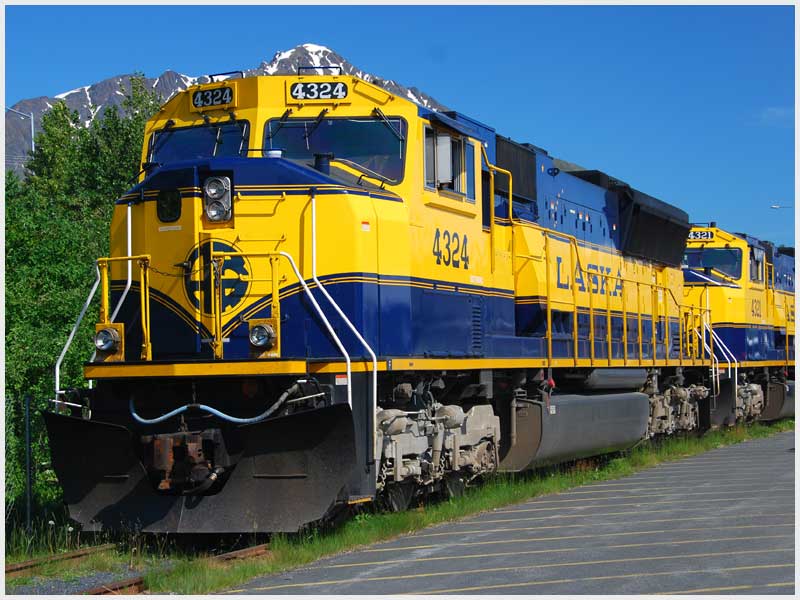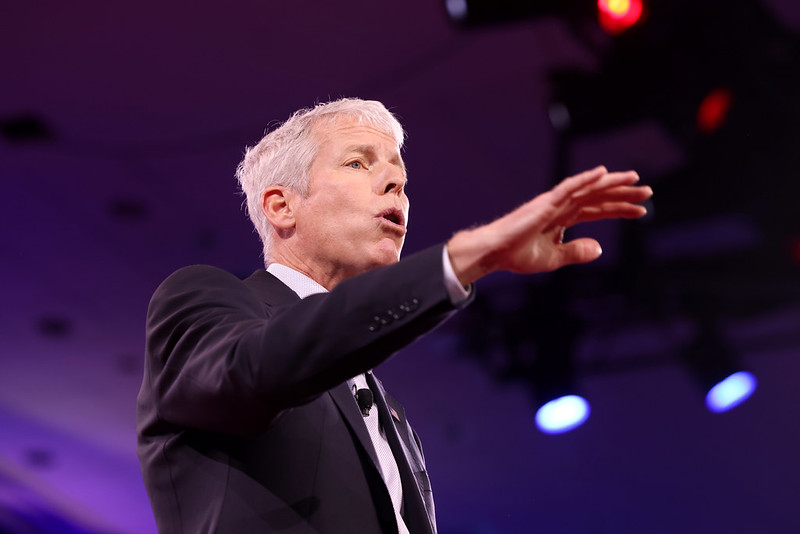For the first time ever, liquefied natural gas (LNG) has been shipped by railroad in the U.S., prompting concerns about risks of accidents and a lack of state or federal regulation for the new and hazardous cargo.
The 40-foot long cryogenic tanks owned by the Japanese company Hitachi, built to be transported by rail, truck, and barge, will each carry more than 7,000 gallons of natural gas, which has been chilled down to negative 260 degrees Fahrenheit, from Anchorage to Fairbanks, Alaska. The company Alaska Railroad will do the carrying.
It’s being closely watched by both the oil and gas and railroad industries, which say that shipping LNG by rail is cheaper and more efficient than hauling it by truck. Alaska Railroad points to Japan as a successful example of the robust transport of LNG-by-rail.
But it’s also raised concerns among environmentalists, who argue that not only is the process potentially dangerous, but that it represents a further build-out of fossil fuel infrastructure as the climate crisis worsens.
“We know LNG facilities and oil trains both have deadly histories of explosions, and the public deserves to know more about this expansion of the country’s fossil fuel infrastructure,” Dune Lankard, senior Alaska representative for the Center for Biological Diversity (CBD), said in a press release. “Rather than finding new ways of burning more fossil fuels, this country needs to address climate change and convert to clean energy.”
CBD has filed a Freedom of Information Act (FOIA) request with the Federal Railroad Administration (FRA) to learn more about the Alaska Railroad proposal earlier this year and to date, has not received anything but what it describes as a “non-responsive reply.”
In October 2015, the FRA granted Alaska Railroad a two-year permit allowing it to send a dozen LNG cars per train on trips across the state. After this fall’s pilot run, the railroad will make a decision about whether it’s worth pursuing LNG shipments as a new line of business, a company representative told the Associated Press.
“Seven more round-trips over four weeks will follow,” Tim Sullivan, manager of external affairs for Alaska Railroad told the industry publication LNG Global. “We’re going to take the information that we get in terms of our efficiencies, the logistics of moving this stuff, find out where we can improve, what we can improve, and the things we can’t improve, and start making decisions as to whether we can make this a line of business.”
LNG Pool Fires
The odds that a punctured LNG tank might burst into flames in the event of a train crash are very low — far lower than the chances of a train car carrying, say, oil obtained via hydraulic fracturing (“fracking”) from North Dakota’s Bakken Shale basin igniting in a crash. But if an explosion did occur, it could be unusually catastrophic. If a number of rail cars strung together were to ignite, the fireball could be far larger than the blast from a truck carrying a single LNG tank.
And LNG burns hotter and longer than many other fossil fuels, especially if a so-called “pool fire” results. “A pool fire is intense, burning far more hotly and rapidly than oil or gasoline fires,” a 2004 Congressional Research Service report noted. “It cannot be extinguished — all the LNG must be consumed before it goes out.”
Those types of fires are extraordinarily rare. To create an LNG explosion, safety experts say, conditions have to be just right. The fuel-to-air mixture must fall into a specific range and unlike many flammable gasses, LNG requires an open flame or spark, not just a hot surface, to ignite.
It’s not unprecedented for those conditions to all line up catastrophically, however. Out of 15 LNG tanker truck accidents in Spain from 1999 to 2012, the LNG onboard ignited into a post-accident fireball twice, according to a 2012 analysis. Those incidents each killed the truck driver and the blast from one was powerful enough to blow out the windows of a nearby gas station and mangle a 15 foot metal lamp-post over 500 feet away from the explosion. In those explosions, experts pointed to a less-than-robust tank design as a key factor.
When it comes to LNG-by-rail, public safety advocates primarily warn of the opposite threat: the extreme cold.
“The risk of fire’s low, the biggest concern with LNG is that it’s at minus 260 degrees,” Capt. Jared Stiglich, of Anchorage’s Fire Station 1, told KTVA in Alaska. “So any kind of incident is going to be an instant frostbite freeze situation, you’re not going to want that around anybody. It’s colorless and odorless so any kind of a vapor cloud might not be seen.”
LNG By Rail Secrecy
Despite these risks, the shipments underway in Alaska are seen as a pilot project that could lead to LNG shipments in the lower 48, with Florida considering a plan to run LNG-by-rail trains through densely-populated regions of south Florida. In the Florida example, The Sun-Sentinel columnist Michael Mayo highlighted in a June 2016 column that he had also filed a FOIA request with the FRA to learn more about the proposal, but got a response saying that “‘Most, if not all’ of the application would be withheld because it’s considered ‘proprietary information.’”
Further, EnergyWire reported in March 2015 that other companies, such as Union Pacific and the Warren Buffett-owned BNSF Railway, have applied for LNG-by-rail permits. DeSmog filed a FOIA request with FRA in April 2015, asking for “Any and all applications received by the U.S. Department of Transportation and/or the U.S. Federal Railroad Administration (FRA) pertaining to shipping liquefied natural gas (LNG) by rail.” To date, we have yet to receive a response, with the FRA last stating in May 2015 that it has “no new information on your FOIA. Once new information is found the FOIA liaison will contact you directly.”
The FRA did not respond to a request for comment for this story.
Abroad, the company JAPEX (Japan Petroleum Exploration Company) also carries LNG by rail and is cited by Hitachi as a company which has done so in a safe manner.
The transportation of LNG by rail has helped to stoke international demand for North American shale gas. Much of that gas, obtained from fracking, will be imported from the Montney Shale basin located in Western Canada. It will be shipped abroad from the Pacific Northwest LNG export facility, according to the JAPEX 2016 Corporate Guide.
Shale gas drilling across the U.S. is currently constrained by a mix of low natural gas prices and a lack of pipelines to carry that gas to market. If LNG-by-rail were to emerge as an attractive alternative to pipeline construction, there would be less of an economic incentive to switch away from burning gas.
And that build-out of new fossil fuel infrastructure runs contrary to efforts to combat climate change, environmentalists warn. LNG is primarily made of methane, a powerful greenhouse gas whose intense climate-warming effects are the most powerful in the first couple of decades after it hits the atmosphere. The time to switch away from fossil fuel infrastructure, climate watchdogs argue, is now.
“If we’re serious about preventing catastrophic warming, the new study shows, we can’t dig any new coal mines, drill any new fields, build any more pipelines,” 350.org’s Bill McKibben wrote in a September New Republic column. “Not a single one.”
Main image: Train Engines Credit: Dan Hershman, CC BY 2.0
Subscribe to our newsletter
Stay up to date with DeSmog news and alerts






